Holistic review of gene and stem cell therapy
Mankind has from time immemorial been saddled with the responsibility of finding newer ways to curb problems and challenges and also while doing this, we also tend to look for easier, faster and less painful way. The approach to treating some disease condition depends on the aetiology and pathogenesis of the disease. Some diseases could be genetic and life threatening while others might just be due to post translational modification (abnormality or changes that occur after gene expression) and this could be due to environmental factors.
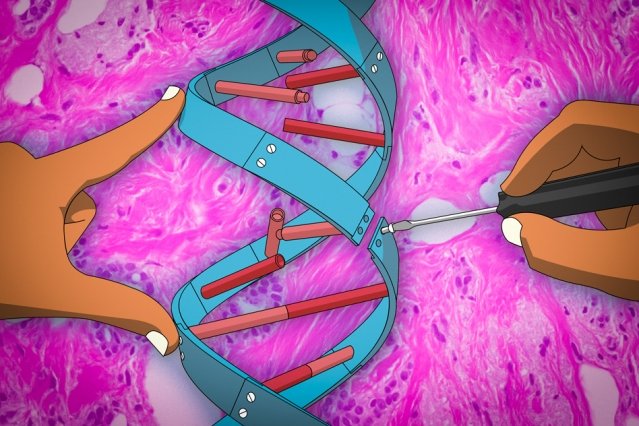 Gene therapy, Image credits: MIT News, MIT
Gene therapy, Image credits: MIT News, MITUsually, changes like mutations that occur in genes are hereditary (can be passed from parent to offsprings) while those that occurs as a result of environmental factors without causing any change in the genetic make-up are not hereditary. Provided the environmental factor does not affect the genetic make up of the individual, changes of this type are only restrict to the individual and can not be passed on to the offspring.
This leaves us with the fact that, problems associated with genes can be permanently corrected by genetic approach while on the other hand those that are not genetic can be either corrected through both genetic and non genetic approach. The former does not imply that genetic diseases cannot be treated with drugs, obviously they can but the main emphasis is on permanent cure. Yeah, it's very for possible for genetic approach to cure both genetic and non genetic disease because the gene is the unit of inheritance and all expressed phenotypes (physically expressed features of human) are as a result of all the genes we inherited from our parents.
Today, we will look at two most complicated methods of treating disease condition which can be genetic or non genetic. Like I earlier pointed out, the cause of any disease determines the best approach to be employed. Let's begin with the widely known one - stem cell therapy
First, a basic knowledge about stem cell is fundamental if you want to have a full understanding of what stem cell therapy is all about. So I will start by giving a simple, straight and concise introduction stem cells.
Stem cells
Stem cells are cells that are undifferentiated. The word undifferentiated simply means that, they are yet to have specific functions, and as such have the ability of transforming into any type of cells. There are two major unique fundamental characteristics a cell must possess for it to be called a stem cell. First is that, they must beImmortal and have the potential of continually renewing itself to produce progenitor cells that are exactly identical with the parent or the originating cells. Though cancer cells have this ability but the only difference between both of them is that, stem cells division is highly regulated while that of cancer is not.
The second fundamental characteristics of a stem cell is that, they must have the ability of specialization i.e they must be able to differentiate into a specific type of cells. Without these two main characteristics, no cell can be regarded as stem cell. In summary, stem cells are immortal cells! Next is to understand the basic classification stem cells.
The classification of stem cells can be very confusing and difficult but trust me, it will no longer be after reading this article. So quickly let's do this, shall we! Stem cells are classified as follows:
Based on their origin or location as Embryonic stem cell (ESC) and Adult stem cell also called Tissue stem cells (TSC). The ESC are gotten from pre-implantation embryos that are only a day old and they contain about 10-15% pluripotent stem cells. To further simply it, they are gotten from blastocytes. While on the other hand, TSC contain tortipotent or multipotent cells that are gotten from foetus, umbilical cord, placenta infants or postnatal individual. You can also regard them as somatic (body) cells. TSC are generally tissue specific and what they do is to actively divide to regenerate damage tissues and to also replenish dead cells when need be.
Based on their developmental potential, they are classified as Tortipotent (from 5-7 days embryo) , pluripotent, oligopotent, multipotent and unipotent. For in-depth understanding of their various functions and characteristic, this article will go a long way in helping you out.
The two major ones of most importance for our discourse are the Pluripotent stem cells which are of the embryonic origin, reason been that they have the potential of becoming or differentiating into all type of cells in the body. During the developmental stage of life - the embryo stage, they are present but for a short period of time before they differentiate into the more specialized cell - Multipotent cells.
The second most important one is the Multipotent stem cells - a tissue specific stem cell which are quite limited in terms of division. Don't get it all wrong. By being limited, it means that they differentiate to become cells of only a specific tissue. They remain quiescent or dormant without any further division or differentiation thus maintaining the stem cell pool. A typical example of this is found in the bone marrow. They are only activated to actively divide by cell division once there is an imbalance in the system. Take for instance, a drastic reduction in red blood cell levels causes the release of erythropoietin, a hormone triggers the bone marrow to produce more red blood cells.
Of all cells, Why stem cells?
The answer is simple, they have the ability of repairing and regenerating all tissues of the body. Ethical issues surrounding the use of embryonic stem cells have long been a mitigating factor for further and in depth study about the human embryonic stem cell and as such, rodents embryonic stem cells are used for study instead. This leaves us with no option but to focus our attention more on the adult stem cells or simply called tissue specific cells.
Stem cell therapy (Regenerative medicine)
Stem cell therapy simply means the use of stem cells in treating variety of diseases. Under regenerative medicine, the regenerative potential of stem cells are harnessed. The adult stem cells though limited to some extent in terms of what they differentiate into, still posses the two major classical attributes of a stem cell are mostly used.
Stem cell therapy seeks to repair damages as a result of disease which can genetic or non-genetic at the cellular level. It focuses on restoring the integrity of a diseased tissue or organ by rejuvenating dying cells or totally replacing them with more viable ones. The commonly known and direct way of stem cell therapy is bone marrow transplant. Always bear this in mind, the ultimate goal of stem sell therapy is to repair any damaged tissue or organ that cannot heal itself or on its own.
Bone marrow transplant is a procedure that has proven to be successful over the years. One of the benefit of this therapy is that you don't necessarily need any donor's organ, rather the cells (stem cells) which are the foundation and building block upon which other tissues and organs are formed is used.
The procedure
First and foremost, a treatment known as conditioning treatment is carried out. What is involved in the treatment is the administration of high doses chemotherapeutic drugs that will help eliminate the cancerous or defective stem cells before the new bone marrow is transplanted into the recipient. Some times radation therapy is used along side chemotherapy to ensure no trace of the cancerous cells are left. The transplantatation could either be autologous (a situation where the patient's own stem cells are used. The patient's stem cell is removed before conditioning treatment and later transplanted back afterwards) or allogeneic (here, the stem cell is from a donor who may or may not be related to the recipient).
A more complex way is the growth of stem cells (stem cell lines) in the laboratory and then intentionally modifying or manipulating the stem cells to specialize into a particular or specific type of cells. The manipulation process results to the cells specializing into a specific type of cells like the red blood cells, nerve cells or even the heart muscle cells. After the cells have been made to specialize into a specific type of cell, they are then implanted into the patient diseased organ such as the bone, the heart etc. Due to their regenerative ability and immortality, they help repair and restore the diseased organ back to normalcy.
Advancement in science and research have made it possible to genetically alter or remodify adult stem cells to revert into an embryonic stem cell. This is done by genetically modifying the stem cells genes through the introduction of an embryonic gene. Normally in adults, the gene that favour pluripotency are blocked but research have shown that the introduction of the four genes - Oct4, Sox2, Klf4 and c-Myc reactivates pluripotency
What this simply means is that, the dependency on embryonic stem cells gotten during pre-implatation of embryo will be drastically reduced. Another ground breaking advancement is that, researchers have shown that it is possible to modulate the bone marrow cells to become heart -like cells that has the ability of repairing tissues of the heart in people with heart diseases.
The potentials with stem cell therapy is so much because of their unique attributes. Today in our contemporary world, drugs products from plants that are based on stem cells are been produced. This products active components are stem cells gotten from plants and fruits such as pawpaw, strawberry, grape etc. The stem cells of the plants are extracted and used in producing products that will be be of high benefit to humans when taken. The stem cells of the plants help rejuvenate dying cells in the body and at the same time supply humans with the essential nutrients lacking in the body. It has been established that for a fact that, deficiency of some nutrients needed in micro quantity leads to some disease conditions. A typical example is the deficiency of iodine resulting to goiter.
The picture here are some of the potential benefits we can get by harnessing the regenerative and immortal ability of plant stem cells in assisting dying animal cells. This is one of the best thing to happen in the field of medicine. The potential benefits are endless with stem cell therapy. To sum it up, despite the potential benefits of this therapy, it is still pertinent to fully understand the common feature both stem cell and cancer cells possess - unlimited cell division. This is very important in order avoid malignant cell formation. Okay that's enough for stem cell therapy, let's talk about gene therapy -the most complicated and complex method of therapy.
Gene therapy
Just like we have established, genetic diseases are much better treated through genetic approach because genes form the basis of inheritance and are also the foundation of everything in humans. Genes carry the basic instructions for making proteins that our cells use. Any alterations in the genetic make up of an individual results to a genetic issue. Cancer for example is a genetic disease caused by changes in the genes that control the way the body cells multiply.
The gene TP53 is a well known gene that produces protein that helps to suppress the growth of tumours. Mutation in this gene is the major cause of all cancers. Another typical gene implicated in cancer in females especially are the BRCA1 and BRCA2 genes. Inherited mutations in these two genes, have been strongly associated with ovarian and breast cancers and also pancreatic and postrate cancer. The PTEN is another gene also implicated in causing thyroid, endometrial and breast cancer due to its association with Cowden syndrome (a hamartoma - a Benin tumour of a disorganized tissue). This is why it is very important to undergo genetic screening if one has any family history of breast, ovarian, pancreatic and postrate cancer. The testing helps detect if such genes are mutated in any one who may not show any obvious sign of the cancers. Remember the gold standard - early detection is better than cure.
 Gene therapy, Image credits: MIT News, MIT
Gene therapy, Image credits: MIT News, MITNow that we have established for a fact that genetic disease has to do with disease associated with the gene, what is the better way to treat it if not through a genetic approach - (Genetic therapy).
Gene therapy is the process of using gene to treat disease. It is an experimental procedure in future that will allow scientist to to treat some genetic or non genetic diseases by simply inserting a modified gene into the recipient or patient's cells rather than using therapeutic drugs. Basically, three approaches have been proposed according to the paper recently published by Genetics home reference, it is either done by:
•Replacing a mutated gene that causes disease with a healthy copy of
the gene.
• Inactivating, or “knocking out,” a mutated gene that is functioning
improperly or
• Introducing a new gene into the body to help fight a disease
The process
Remember we said initially that when a gene is mutated, it result to the production of abnormal protein or possibly the protein might be missing. Now gene therapy salvages this situation by the replacement of the abnormal or missing gene with a copy a normal gene. Insertion of the normal gene is done using a vector and the commonly used vector is a virus that has been genetically modified to prevent it from causing harm - viral phage. If the new gene is inserted directly into the cell, it won't work. Hence the need for a carrier molecule that will help deliver the gene into the nucleus of the cell. Genetically engineered viruses are used because they can infect the cell and ultimately deliver the gene of interest into the receipient, remember out discussion about how HIV infects the CD-4 cells.
The vector is injected through an intravenous injection (IV) into a particular tissue of the body where it is then taken up by the recipients cells. Another method through which this can be done in the laboratory is by extracting some cells from the patient and then introducing them to the vectors which in turn incorporates itself into the cells. Now, the cells that contains the vector are subsequently injected back into the patient's tissue. As long as they treatment is successful, the new copy of the gene introduced will make the proteins functional.
One the biggest technical challenge this procedure has is the use of virus as vector to deliver the gene into the recipient. There is a very high risk in using a virus as a vector because there are chances that the virus could revert and become potential harmful inside the patient and can also elicit a very strong immune response that can be lethal in the recipient. Thirdly, the virus could target wrong cells and even cause tumour. These are some of the challenges associated with using Viral vectors. Advancement and further research has lead the development of a Nanoparticle that also has the ability of penetrating the nucleus of cell.
This non viral vector (Nanoparticle) is made from a biodegradeable polymer that reassembles into a nanoparticle when they come in contact with a genetic material - DNA. When injected into the target tissue of the recipient, they are absorbed by the process of endocytosis into the cells where they release their DNA payload and subsequently activated by the cellular machineries of the recipient. Though they may not be as efficient as viral vectors but they are far better off when compared to using viral vector since the safety of human is the number one priority.
Another area of advancement is the development of gene therapy technique that uses microRNAs (small noncoding RNA molecules that can regulate gene expression). These microRNAs will help control the invasiveness or metastasis of cancer cells. The possibilities with gene therapy holds a lot of promises as clinical trials with people that have diseases like haemophilia, leukemia and severe combined immune deficiency have so far yielded positive results. Once the bottle necks or challenges facing gene therapy as earlier stated are removed, effective and permanent treatment for genetic diseases will no longer be a burden.
References
•making stem cell healthy again
•About cancer
•stem cell transplantation
•Nanoparticles gene - gene therapy
•Targeting cancer using microRNAs
•helping blood cells regenerate stem cell
•Gene therapy technique prevent cancer metastasis
•Gene therapy -primer
•Genes and gene therapy
•About gene therapy
•Stem-cell therapy
•bone-marrow-transplant
•Introduction to stem cell therapy
•bottleneck-plasmids-cell-gene-therapy
•NIH- stem cell therapy
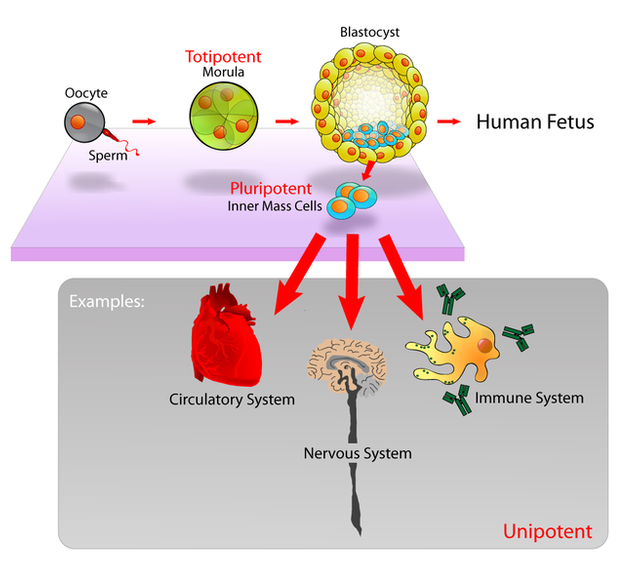
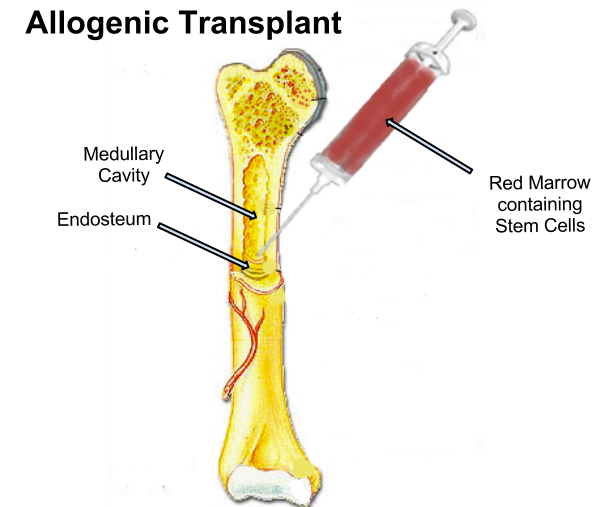
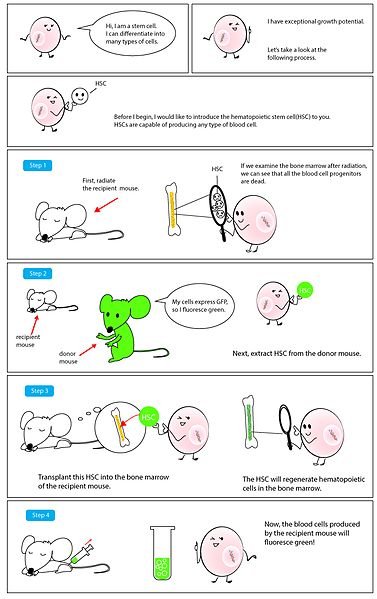
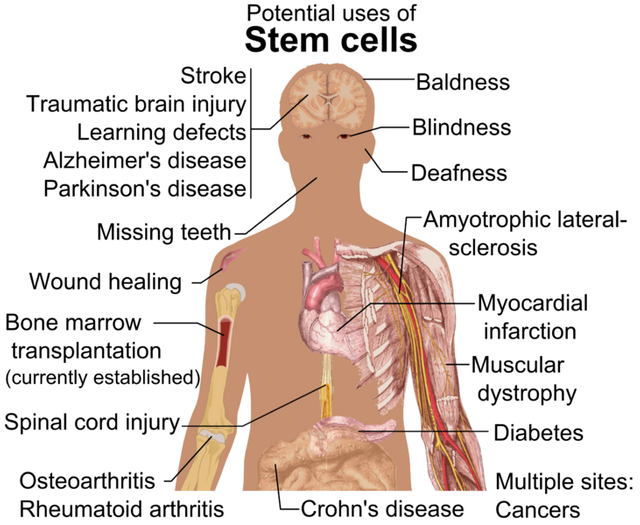
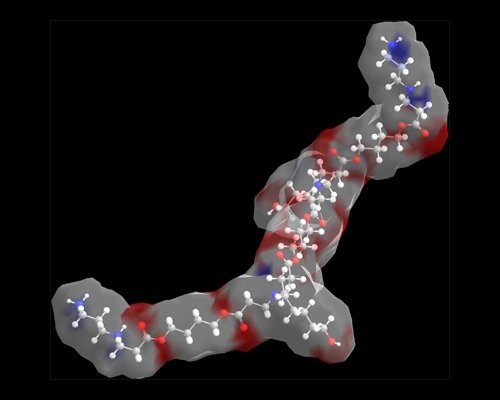
This post has been voted on by the SteemSTEM curation team and voting trail. It is elligible for support from @curie and @minnowbooster.
If you appreciate the work we are doing, then consider supporting our witness @stem.witness. Additional witness support to the curie witness would be appreciated as well.
For additional information please join us on the SteemSTEM discord and to get to know the rest of the community!
Thanks for having included @steemstem in the list of beneficiaries of this post. This granted you a stronger support from SteemSTEM. Note that using the steemstem.io app could have yielded an even more important support.
Congratulations @cyprianj! You have completed the following achievement on the Steem blockchain and have been rewarded with new badge(s) :
You can view your badges on your Steem Board and compare to others on the Steem Ranking
If you no longer want to receive notifications, reply to this comment with the word
STOPVote for @Steemitboard as a witness to get one more award and increased upvotes!